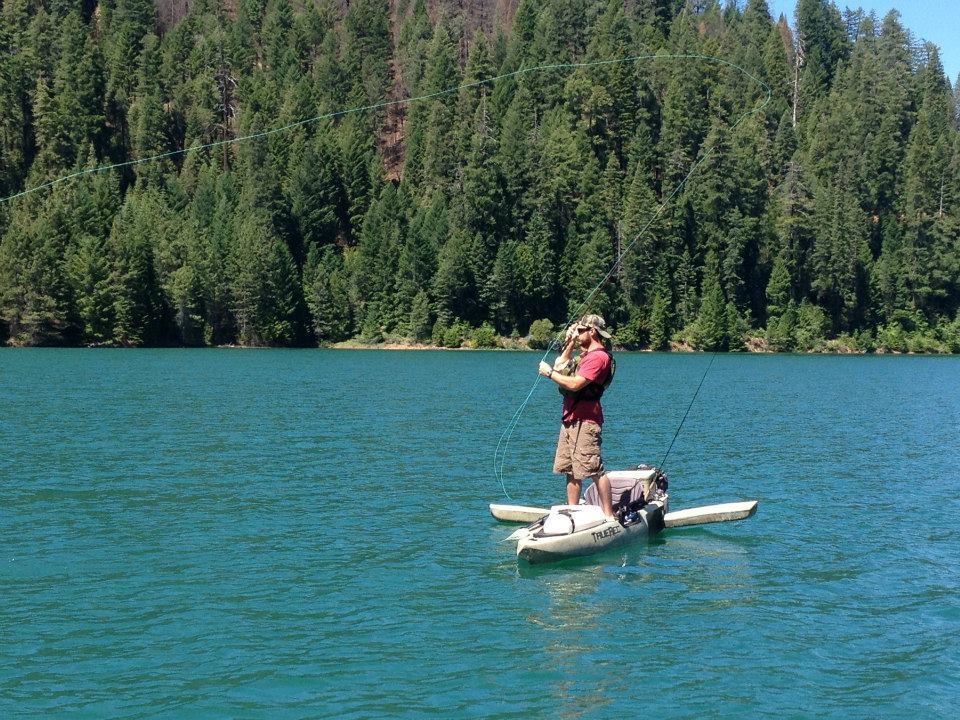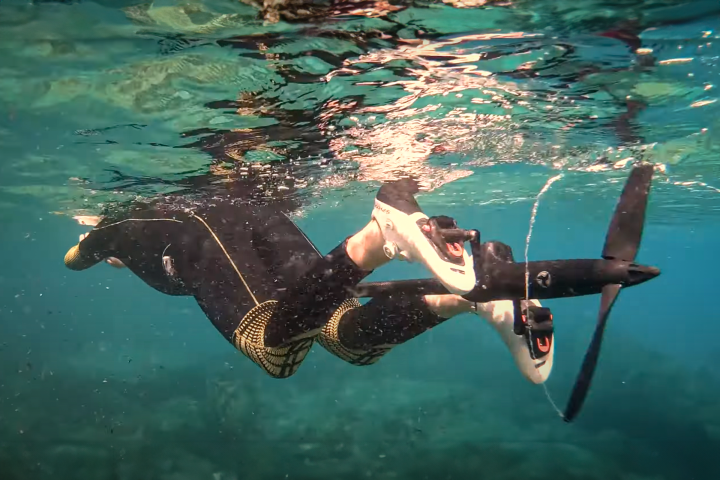Compared to human-powered watercraft such as canoes or rowboats, kayaks are certainly fast, plus they’re easy to paddle. Should you try to stand up and fish or scuba dive from one, however, it’s quite likely to capsize. With that in mind, California-based TrueRec has designed the DFP (Dive-Fish-Paddle) sit-on-top kayak. It features spring-loaded pontoons that fold out to the sides and lock in place for added stability when stopped, but that otherwise stay tucked in and out of the way.
While other kayaks have offered retractable pontoons before, these have usually taken the form of outriggers that pull in against the sides of the boat when not needed, but that still drag in the water. By contrast, the DFP’s pontoons fold right into recesses in the hull, giving it the water-cutting profile of a regular kayak when they're not in use.
The kayak itself measures 13 feet (4 m) long by 32 inches (81 cm) wide, weighs 75 lb (34 kg) and can carry up to 450 lb (204 kg).

Although its pontoon system is its major selling point, other features include front and rear storage areas for scuba tanks or other items; a below-deck cargo compartment; rail mounts for gadgets such as fish finders; and, a dry hatch for storing items that shouldn’t get wet, such as phones and wallets. An optional deck-mountable live well is also available, for storing live bait or caught fish.
The designers of the DFP are currently raising production funds, on Kickstarter. A pledge of US$1,450 will get you a kayak of your own, when and if they reach production.
The DFP can be seen in use in the pitch video below.
Sources: TrueRec, Kickstarter







